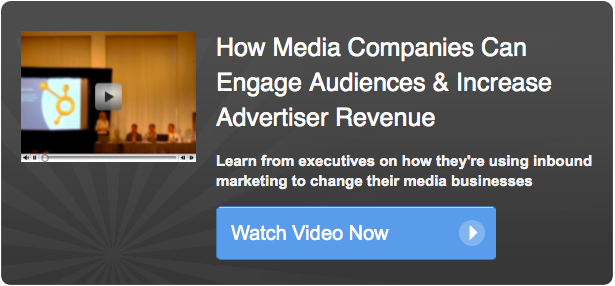 In my last post, How to Differentiate your Media Company with Inbound Leads for Advertisers, I discussed why publishing companies should adopt inbound marketing tactics and how to develop strategy to generate high quality leads for advertisers. This post examines how publishers can increase revenue and demand a higher cost per lead (CPL) from advertisers.
In my last post, How to Differentiate your Media Company with Inbound Leads for Advertisers, I discussed why publishing companies should adopt inbound marketing tactics and how to develop strategy to generate high quality leads for advertisers. This post examines how publishers can increase revenue and demand a higher cost per lead (CPL) from advertisers.
4 Steps to Improving your CPLs in 6 months
1) Be The Best Marketing Partner
In my previous post I discussed why publishers need to be the best marketing partner to their advertisers. Improving your CPLs starts with being the best marketing partner. In my opinion you must be organized and hire (or leverage a willing and able internal resource) the best marketer in your industry to manage a lead generation eco-system within your publication. Then organize everything in your company -- editorial, marketing and sales -- to become the best marketing organization in your target market. More specifically:
- Have a director of content who:
- Manages the development and mapping of marketing content to the buyer’s journey.
- Maintains a marketing content development calendar aligned with advertiser trends and needs.
- Identifies content for re-packaging, new compilations and other uses that delivers the same content in multiple packages and/or delivery channels.
- Train “ad sales” teams to be marketers. If they don’t understand content marketing strategies and how content impacts your advertisers' sales funnel, they are adding no value at all.
- Your audience database is your most important asset. Be sure a marketer owns this (not IT or circulation). Most importantly, be sure this person is tied to revenue.
2) Create a Fair Trade With Your Audience
This means, leverage your publication's marketing content in exhange for audience purchase intent information. Do it by implementing a progressive registration system that allows you to turn site visitors into known contacts that are stored in your HubSpot database. Then, incrementally capture information about each contact. Doing this will increase the value of your audience to your advertisers. Keep in mind:
- Think less about traditional demographics and more about the buyer’s journey and advertiser sales funnel trigger information.
- Don’t ask for 10 data points in a form all at once if you want market leading conversion rates. You can gather more information over time.
- Consider the value of your publication's marketing content assets to guide what information, how much information, and when you ask for information from your audience.
- Once you gather this information from readers, you have successfully created leads.
3) Pro-actively Sell Leads to Existing and New Advertising Customers
As leads are identified in your eco-system, offer them to your advertisers. "Hi Annie Advertiser, we know of 500 people actively researching your product category, would you like to reach them?" If the marketers aren't interested in your leads, call the head of sales. Chances are he or she will be.
4) Use Standard Marketing ROI Metrics to Prove the Value of Your Leads
- # Marketing Qualified Leads * 9% = # of Pipeline opportunities * Average sale price = Pipeline value created.
- ROI = Campaign cost / Pipeline dollar value
It is possible to increase your CPLs by implementing the systems, processes, organizational structures and best practices of the best marketing departments. With an inbound strategy and tactics in place our trade publishing company has become recognized as a reliable source for the highest quality leads in our target markets. We have been able to increase our CPLs by 50% in 6 months and can now engage our customers in longer term contracts, all which drives more profitability and predictability for our business.
So remember, be marketers, not just publishers or content producers.
Seth Nichols has nearly 20 years experience in the B2B and B2C media industry and is currently the owner and CEO of Longitude Media, a B2B trade magazine publisher in Boston. Seth has driven digital strategies and managed organizational challenges within traditional magazine publishing organizations since the earliest launches of B2B trade websites. He continues to learn from experimentation with new business models for media properties. Previously Seth has led the digital media groups of B2B publishers Questex Media and United Business Media.

